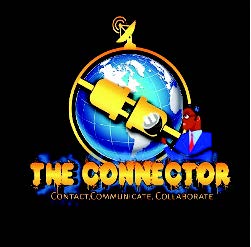This is probably one of the most powerful insights that I will share with you from my upcoming book, “Urban Networking: The Essential Guide for the Urban Professional.“
In this excerpt, I share with you the key elements of what I call your “Social Capital Investment Plan (SCIP).” The components of this article will change your network forever. These elements are so powerful I have broken them down into a three-part series. The first part is creating your Strategic Networking Log; this log will help you identify and classify your networking allies. The second part will cover your Social Capital Classification Chart – this chart will aid you in placing your prospective network teammates in functional roles that support the obtainment of your goals; and the final part will deal with your SNAP (Strategic Networking Action Plan). Your SNAP will connect your goals with benchmarks and establish a timeline for accomplishment. This is where you become dangerous. I am going to share with you a simple log that will aid you in establishing yourself as an Urban Networking Professional. This log will be the foundation of your own personal social capital portfolio. Your perspective and approach to networking are guaranteed to change after you complete these components.
Today, we will look at the definition/role of the Urban Professional and examine how they build and cultivate social capital.
How do you see yourself?
When you hear the term “Urban Professional” what picture comes to mind? Do you see a pin-striped suit, a power tie, and shined shoes? Do you see a yellow hard hat, tool belt, and timberlands? Maybe you see a teacher in the inner-city school writing on the blackboard or perhaps a social worker counseling a client in their home. You may even see a secretary multitasking with the phone in one hand and the other hand on a computer keyboard or a postal worker making his/her rounds. These all are perceptions of what an “Urban Professional” is.
For our purpose, we will define an urban professional as someone who strives to be at the top of their game. They can be of any race, creed, or color–I know many Latino as well as Asian urban professionals. What urban professionals have in common is their natural habitat is the city. They live, grow and breathe in the Metropolitan environment.
Urban professionals take the survival techniques they have learned in the urban environment to Wall Street and Main Street. They have a need to achieve, and they believe in quality and the pursuit of excellence.
Characteristics of an Urban Professional
Well dressed
Articulate
Organized
Groomed
Outgoing
Reserved
Connected
Compassionate
Multi-tasker
Intelligent
Well rounded
Dedicated
Persistent
How many did you check off?
Social Capital
Social capital refers to a network of relationships created by a group of people that help them achieve common goals and lead a comfortable life. Humans are social creatures, and such a voluntary association benefits the members in the long run, adding value that an individual cannot, otherwise achieve.
– WALLSTREETMOJO
Investing in social capital means recruiting allies and advocates. A social capitalist-aka-Urban Networker’s goal is to transform strangers into allies.
HOW TO DEVELOP YOUR SOCIAL CAPITAL INVESTMENT PLAN (SCIP)
1. Define the individuals in your network by levels.
2. Categorize your network by roles.
3. Develop a system to assimilate and elevate these individuals into your Social Capital Investment Plan. (SCIP)
In the book, “Make Your Contacts Count,” Anne Baber and Lynne Waymon refer to a six-stage model that refers to the growth of networking relationships. For the purpose of Urban Networking, we have adapted the stages into levels with some slight adjustments.
The levels are defined as follows:
Level 1 – Stranger
Level 2 – Acquaintance
Level 3 – Associate
Level 4 – Friend
Level 5 – Advocate
Level 6 – Ally
Stranger – (Level one) The first level is someone you don’t know. You had no contact with them in the past. You don’t know who they are or what they bring to the table.
Acquaintance – (Level two) Someone you barely know. You have casual contact with them. You may or may not know their names.
Associate – (Level three) These individuals may work with you, live next to you, and/or spend time with you. You know their name, position, and a little something about them.
Friend – (Level four) Someone you know their name, family members, and you have common friends and interests. You have an emotional attachment to them. You may frequent their homes, attend their barbeques, and be invited to and participate in their weddings, bachelor parties, gender reveals, and birthday parties.
Advocate – (Level five) They know you, and promote you to others. Someone who looks out for you. They know your name and the initiatives, products, resources, and services you represent. They believe in what you are doing and are willing to stand behind you because you have demonstrated integrity and competence.
Ally – (Level six) – The ultimate level of relationship that urban professionals/networkers are striving for. These individuals are working with you in a mutually beneficial relationship. They are close collaborators, partners, and teammates–someone who has your back.
Network Analysis
1. Take out a pad and create a chart with five parallel columns. Label each column with Acquaintance, Associate, Friend, Advocate, Ally
2. Take out your cell phone. Identify the members of your network. Place your colleagues, coworkers, friends, and family contacts in the appropriate column based upon the above definitions
(While some of the roles may overlap, categorize your network by the primary role they play in your life)
3. Place a star beside those relationships you want to cultivate/invest in.
4. Create a plan that will move those individuals to the upper levels of your networking circles
You have just created your Strategic Networking Stakeholder Log. You now have a snapshot of your network. You can intentionally build relationships and create a powerful team of allies.
In our next article we will show how to classify individuals who can help you achieve your most important personal and business goals.
Whether your goal is to turn a stranger into a friend or an associate into an ally, reason why a person transforms is because you have not only validated them but demonstrated the qualities of competence and integrity.
Coming next: Your Social Capital Classification Chart.
– Who you need on your team and why.
Michael Rice is an award-winning social innovator and author of the transformational guide, Be Magnificent! Exceed Your Expectations. He is the publisher and editor of “The Connector Live,” a weekly internet video blog on the New Urban Network on YouTube. He touches thousands of individuals and organizations with his insights, commentary, and suggestions for achievement and positive outcomes.
He is the founder of Community Partners In Change, www.communitypartnersinchange.org, an organization dedicated to providing capacity-building workshops and strategic planning to local communities. He is also a trainer, community strategist, and motivational speaker. He is available for speaking engagements (both large and intimate), including educational institutions, faith-based organizations, conferences, and workshops.
Contact: theconnector@verizon.net or call 267-303-0653.


